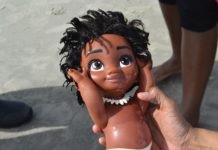Having taught Sunday school briefly, I understand the challenge of bringing holidays into an understandable form for children. On top of that, there is definitely a smaller selection for Chanukah than what’s offered for Christmas. We may be Chosen but we can’t be choosy. I can’t imagine what the folks who celebrate Diwali have to choose from. I was concerned there might not even be enough Chanukah books up to snuff since we can’t even agree on the spelling.
In honor of the holiday, I took my current charges, two infants under six months, to the local library to take advantage of their discerning readership and hit the shelves. I came back impressed with a book for each evening. Thanks to the Burbank Public Library for most selections.
1. My First Chanukah by Tomie dePaola is a great introductory board book for droolers to enjoy. It mentions all of Chanukah’s greatest hits: Maccabees, latkes, dreidels, gelt and menorahs with simple illustrations that complement the “just the essentials” that appear in its pages.
2. A big hit was found with Where is Baby’s Dreidel? by Karen Katz. Ceremonial objects are hidden under brightly colored flaps that baby discovers on his search for a favorite toy. I could see this one being adored and then destroyed by January.
3. For those who can be trusted not to tear pages, a good option is Hanukkah Lights, Hannukah Nights by Leslie Kimmelman and illustrated by John Himmelman, which slips some counting in with tradition. Each night comes associated with a tradition. The Shamash candle on the first night, dreidels on the fourth etc. A crowd pleaser was found in the picture of the kittens playing with golden gelt featured for night seven. Why not slip a little math into it?
4.Hoppy Hanukkah by Linda Glaser and with illustrations from Daniel Howarth, follows a family of bunnies celebrating the holiday. I liked that it clarified some traditions like when the baby bunny wants to blow out the candles, the parent bunny explains why they are left on. The book is a little long for preschoolers but might keep a kindergartener’s attention.
5. The Hanukkah Mice by Ronne Randall and illustrated by Maggie Kneen would also do well with early elementary ages. The illustrations were bright and took over the whole page. There was a manageable amount of text and the story showed some basic Chanukah traditions in action such as lighting the candles, getting gifts, etc. The story centers on a set of mice who take up home in a dollhouse received as a gift for the holiday by a girl named Rachel. It’s a little too gift focused—if I didn’t know anything about Chanukah I might assume from reading this that presents are the main focus. But the little girl is honorably generous about sharing her gifts with a family of mice. If your child has already come to see gifts as entitlement, maybe this might encourage them to share.
6. The Chanukkah Tree by Eric A. Kimmel and illustrated by Giora Carmi is the book equivalent of the Shrek genre of kid’s movie–ostensibly made for children but loaded with things to engage an older audience. The story takes place in Chelm, the site of countless Jewish folktales, which is not something that your average elementary age kid would know though. Chelm is famous for its gullible inhabitants. Therefore, the premise that a peddler panicked by the encroaching end of Christmas day unloads his last tree on the residents of the town with the ruse of it being a “Chanukah Tree” is following in that tradition. This year Chanukah falls nowhere near Christmas though, so that part would have to be explained. Actually there might be quite a bit of explanation attached to reading this book.
With many multicultural families hosting a Christmas tree and a menorah, it seemed from the title an interesting variation on that theme. That being said, there’s a lot going on with this story in terms of Jewish/non-Jewish relations and the slight insinuation that only an idiot would have such a thing. In the end, it turns out to be a good thing but I won’t spoil it for you. Because there was a lot of text for a children’s book, which in combination with the complicated understanding necessary to appreciate the irony of a Chanukah tree, it is best for older children.
7. A better bet for interfaith homes with young children would be Light the Lights by Margaret Moorman. The book shows a family celebrating Chanukah and then Christmas in succession with the lighting of lights being emphasized in each cultural tradition. They offer no explanation of why this might be happening but the book allows a child who experiences both holidays a chance to see herself reflected in it.
8. Another winner for older kids is In the Month of Kislev by Nina Jaffe and illustrated by Louise August. The pictures reminded me of colored woodblock prints which effectively gelled with the story’s underlying emphasis on social justice in the Shtetl. When Feivel, the lumber merchant, takes umbrage at the children of Mendel, the rabbi dispenses wisdom that sets things straight. It’s a morality tale centered around the Chanukah season.
And even though I set out to present one story for each night of Chanukah, I’ll throw in an extra one for good luck.
9. Also by Eric A. Kimmel but with a different illustrator, Will Hillenbrand, Asher and the Capmakers is also geared towards older children. It uses words as varied as “Carpithinian” and “Pasha” and might be a little scary for younger kids since it mentions evil spirits. The pictures, while beautifully expressive, even scared me a little. It is a tale written in the vaguely gothic old-school fairytale style of children encountering challenges in the world. I appreciated the author weaving together various cultural traditions, Yiddish, Irish etc., in order to create an original tale.












































[…] This post was mentioned on Twitter by Cosmopolitan Kids and momsgoneglobal, InCultureParent. InCultureParent said: Happy Hanukkah-our essential books 4 kids: https://incultureparent.com/2010/11/the-essential-hanukkah-book-list-eight-books-for-eight-nights/ […]